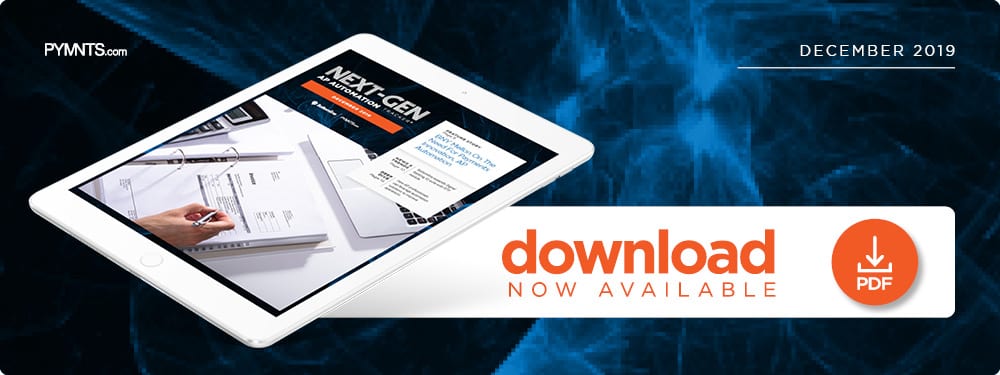BNY Mellon On The Need For Payments Innovation, AP Automation

Digital payment innovations like real-time payments (RTP) have given businesses more options to improve slow accounts payable (AP) processes. But many firms lack the know-how for actually adopting these automated processes. In the latest Next-Gen AP Automation Tracker, Carl Slabicki, head of strategic payment solutions at BNY Mellon, tells PYMNTS the two critical factors to consider for improving cash flow as businesses embrace automated AP solutions.
 Businesses may believe they need to spend money to make money, but many are spending more than necessary to keep their accounts payable (AP) departments running. Paper checks remain the primary method through which U.S. firms make and receive B2B payments, even though more cost-efficient digital payment options have become available.
Businesses may believe they need to spend money to make money, but many are spending more than necessary to keep their accounts payable (AP) departments running. Paper checks remain the primary method through which U.S. firms make and receive B2B payments, even though more cost-efficient digital payment options have become available.
This does not mean businesses are disinterested in newer payment innovations, however. Recent PYMNTS research finds that 46.4 percent of AP professionals would like to implement electronic invoice solutions, 35.8 percent would like to adopt automatic order matching technologies and 22.9 percent would like to integrate ePayables with virtual cards into their broader B2B operations.
AP professionals’ payments innovation fervor does not seem to be translating into the broader B2B ecosystem despite such interest. Carl Slabicki, head of strategic payment solutions at BNY Mellon, recently spoke to PYMNTS about how businesses’ B2B payments expectations are shifting and how firms and financial institutions (FIs) can use AP automation to enhance their operations.
Digital payment innovations have flooded the market in recent years, Slabicki explained, giving firms new opportunities to improve upon slow, manual legacy payment systems. The recent digital payments innovation surge comes after years of stagnation that featured little disruption or innovation.
“You have [the] brand-new Real-Time Payments network launched two years ago, you have Zelle as a massive consumer brand within the U.S., offering payments to business services [and] you have real-time account validation services via [application programming interface] API,” he said. “You also have the opening of a lot of these directories across the network to validate, authenticate and provide kind of security around the payments flow.”
Many U.S. businesses are still heavily reliant on legacy payment procedures like paper checks, however, and Slabicki said such methods are still favored for AP payments, class action settlements, consumer checks, investment distributions and refund claim payments.
The benefits of going digital
Numerous FIs are acutely aware of this issue, though, and are educating their business partners about digital payment methods’ benefits. Slabicki stated that BNY Mellon is advising its partners to focus on two factors when designing and implementing automated AP solutions and other B2B payments innovations.
The first is ensuring that funds reach their intended recipients and not fraudsters, so BNY Mellon is implementing data analytics solutions to detect fraudulent transactions in real time. Slabicki pointed to a “new wave” of digital directory solutions that “collect, validate and authenticate businesses’ information, [including] routing numbers and account numbers, how they want to receive that data [and] how they want it formatted.” Firms making payments can compare users’ data to the information stored in these directories to instantaneously determine transactions’ authenticity.
The second point of focus relates to the speed at which these directory solutions analyze, collect and transmit transactional data, as such processes must ensure that recipients have received funds. This can be particularly challenging when AP departments use paper checks, one of the slowest, least reliable payment methods for payment status tracking. Neither senders nor recipients can easily determine whether checks have been received or deposited once they are mailed, and it is harder for senders to verify whether funds are heading to the correct addresses. This makes it difficult for both parties to manage their cash flows and increases the likelihood that checks will have to be tracked down, retrieved and re-sent.
AP automation can help. Automated payment solutions that compare transactional information to recipients’ stored data can instantly tell payors and payees whether payments were made to the correct accounts. They also provide real-time updates on where funds are in the transaction process, giving recipients more insight into their payments’ locations.
“Even if the settlement is sometimes delayed, [it is good] knowing that I got my refund payment, I got my claim payment, I got my payroll, I got my reimbursement,” Slabicki said.
Keeping these two key factors in mind will play a critical role in convincing business partners and clients to adopt faster, smarter, and more reliable AP innovations.
